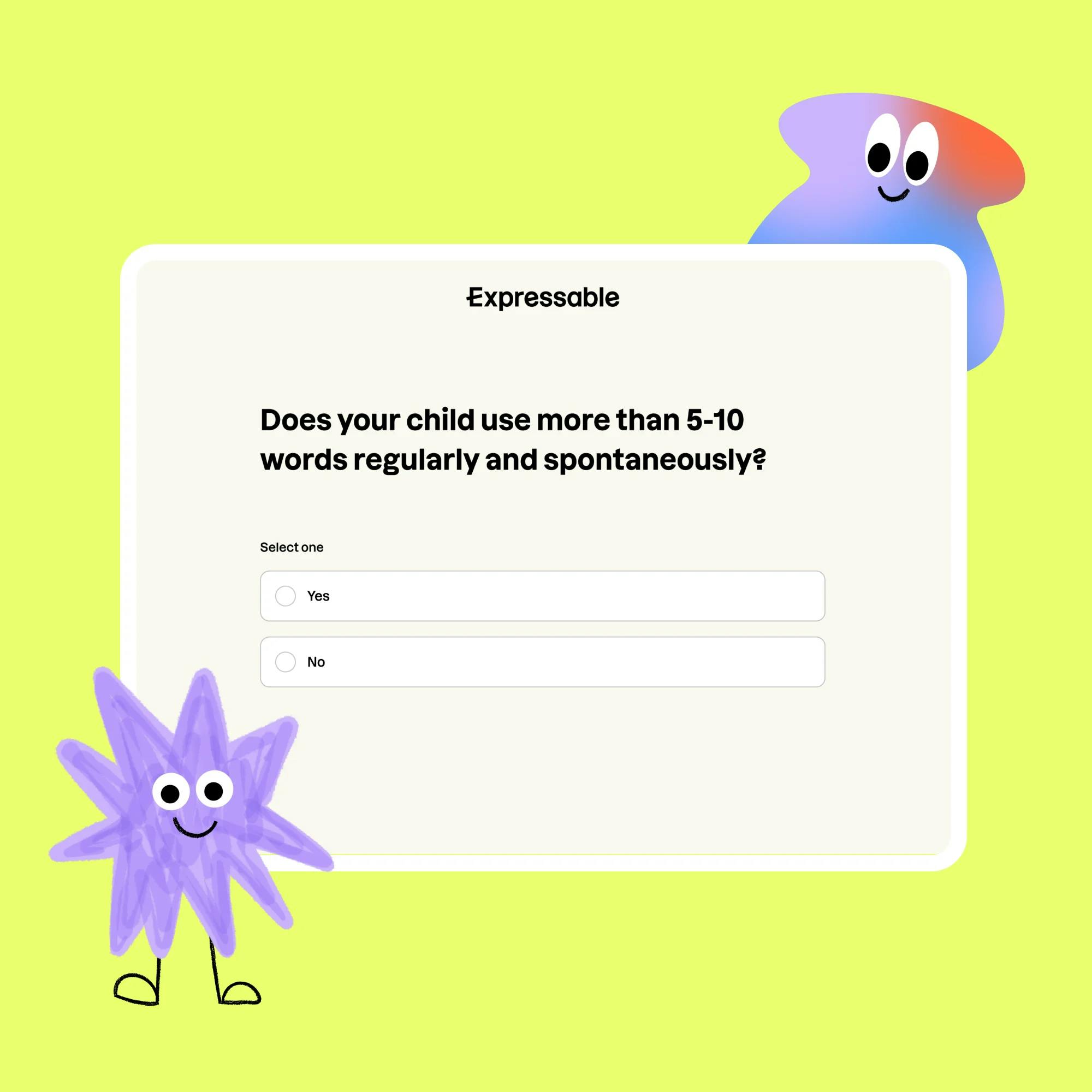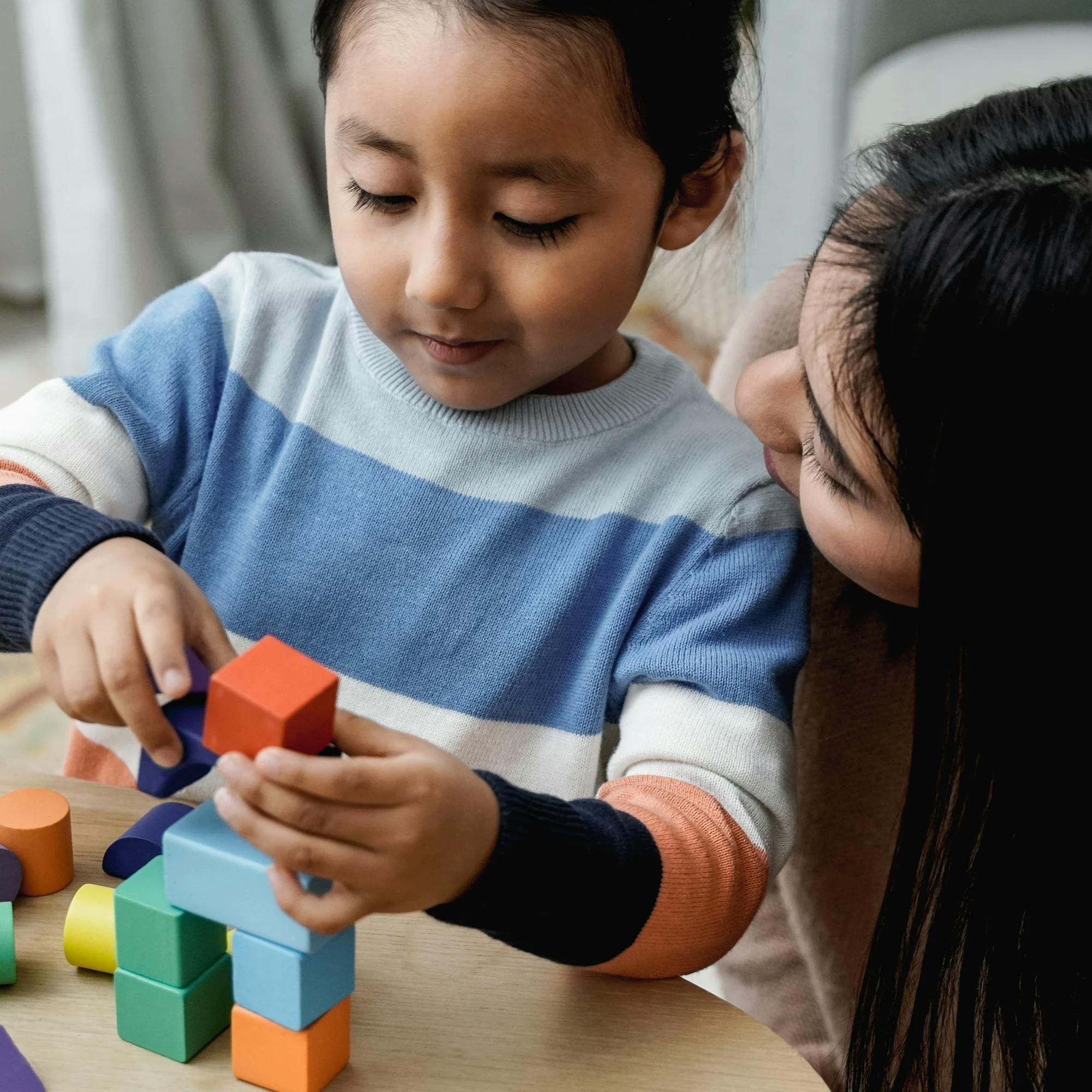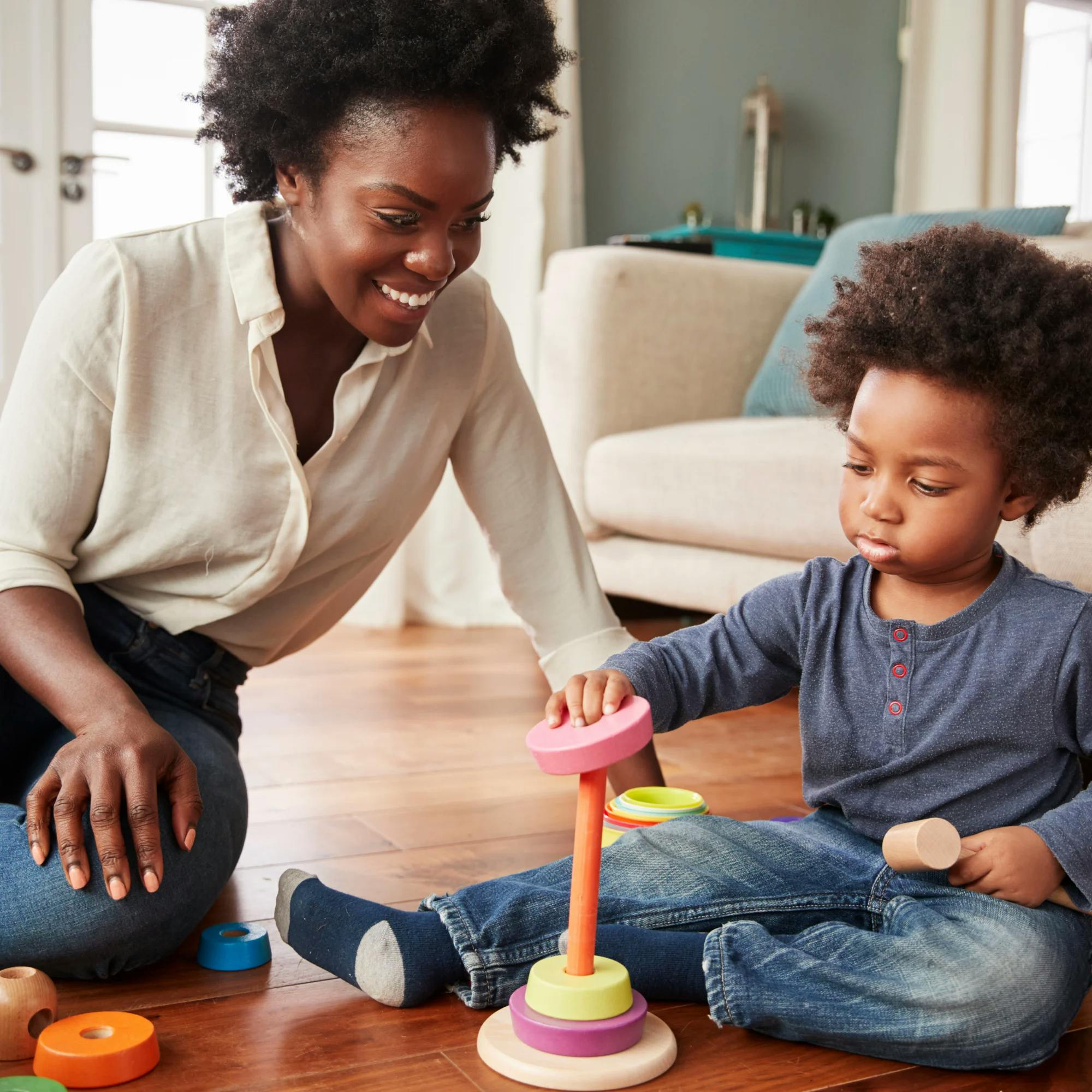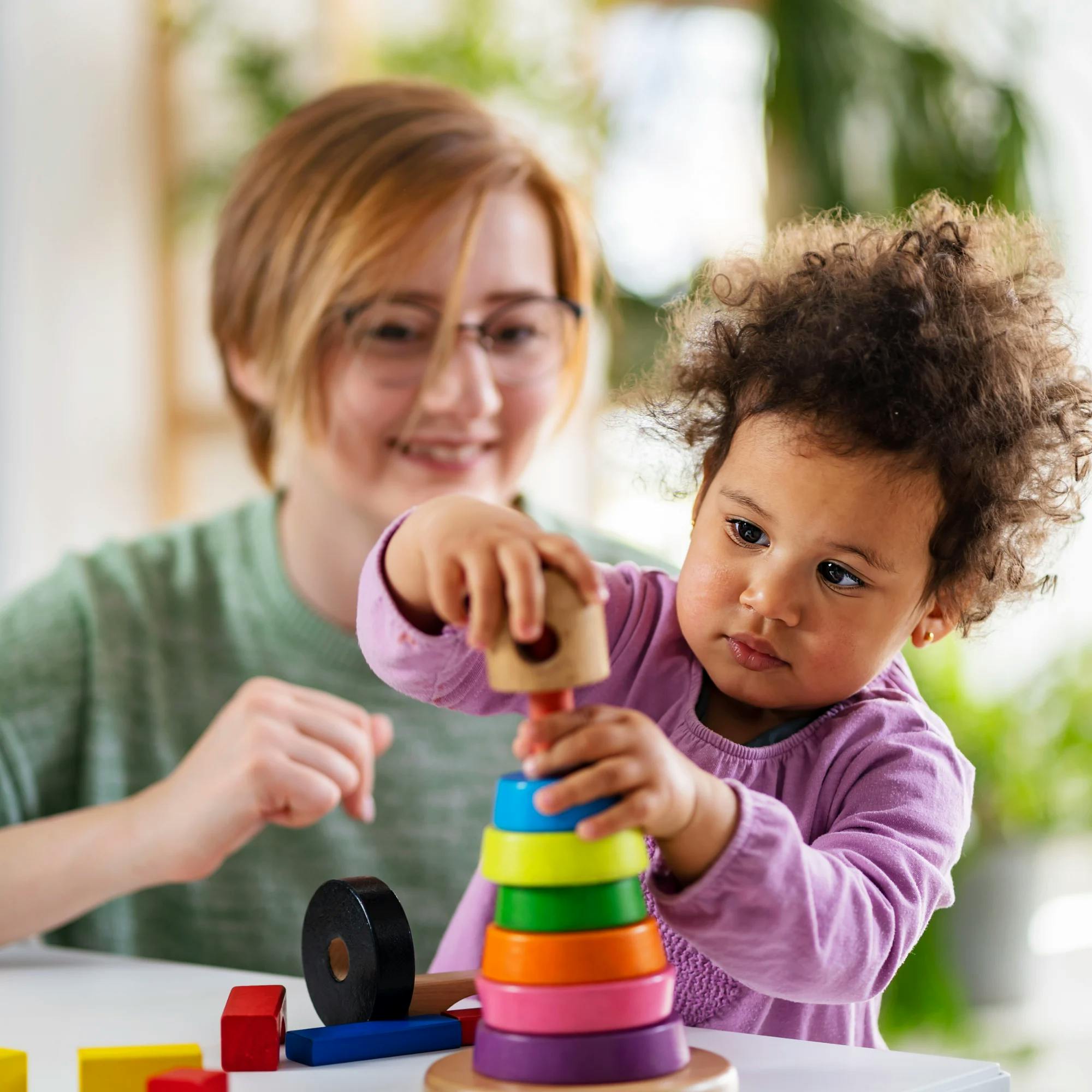We all start communicating from day one, even though we're not saying words. An infant cries when they're hungry or tired. And who doesn’t love the sound of a baby’s belly laugh when they see a silly face?
The ages of 0 to 3 are crucial when it comes to speech and language development--and it’s not uncommon for delays to occur. This happens when children do not meet typical developmental milestones expected for their age. When parents and caregivers notice this, they may wonder if a speech or language delay means autism.
There are lots of reasons for speech and language delays, and sometimes it’s hard to determine the underlying cause. However, it’s important not to jump to conclusions. While speech delays, language delays, and learning differences are common among autistic children, just because a child is a late talker does not mean they have autism.


What are typical communication milestones for babies and toddlers?
From the moment a child is born, they begin to communicate. Parents hold their breath until they hear that first scream from their newly born baby. Within the first three months, we expect a child to look at their caregivers, respond to their voices, smile in response to a person or their voice, and react to sound. They begin to coo and cry, and we interpret these sounds to anticipate their needs.
Within 6 to 9 months, an infant can typically recognize familiar people, enjoys reciprocal play like a game of "peek-a-boo," and begins to imitate familiar sounds and actions. This is also the age when language starts to emerge, through babbling such as “mamama” and “bababa.”


Around age 12 to 18 months, one of the most exciting milestones typically occurs: we begin to hear a few meaningful words, such as “cookie” or “ball.” At this age, children should also begin using greetings, such as “hi,” and “bye,” as well as one of every child’s favorite first words: “no.” They should be pointing to objects, vocalizing, and trying to say words.
By age 18 months, a child should have about 50 words that they use frequently.


By the age of 2, rapid vocabulary expansion occurs, and they should be using between 250 and 300 words. Toddlers should begin combining two words together to make a request, comment, and label things throughout the day.
By age 3, children should start answering questions and carrying out 2-step unrelated requests, such as “First clean up your toys, and then go get your shoes.”
All of these exciting developmental milestones happens within the first few years of life!


What’s the difference between speech and language delays?
Before we talk about the unique characteristics of autism, let's discuss the difference between speech and language delays. While they share similar features and are often used interchangeably, there are key distinctions every parent should know.
Speech refers to how children use sounds and words to express their needs, wants, and desires. Children who have delayed speech still follow typical developmental patterns, but often at a slower rate than children of similar age.
For example, they may continue to struggle with hard-to-pronounce sounds that other children have mastered, such as the /r/, /s/, or /z/ sounds. This makes them harder to understand, and their speech sounds less mature.


A language delay doesn’t impact the physical act of “how” children produce sounds, but “what” they’re actually saying. Children can often correctly pronounce sounds and words, but they can’t use these words to form intelligible phrases or sentences. This is what’s referred to as an expressive language delay.
In addition, a receptive language delay can impact a child’s ability to understand what others are saying. They often struggle to process information, learn the meaning of new words, and comprehend verbal communication as well as written text.
Check out this informative guide to learn more about expressive and receptive language delays.


What are some differences between communication delays and autism?
A speech or language delay does not necessarily mean that a child has autism. Let's discuss some of the differences between communication delays and autism.
As mentioned, children with communication delays still follow the same progression as their peers, but often at a slower pace. It takes them longer to reach age-appropriate milestones.
However, these children are still highly motivated by social responses. They want to be held, touched, and hugged by their parents. They respond positively to attention, mimic the actions of people around them, and can become bored, upset, or lonely when left alone. In short, even if a child is has a delay in speech or language, they’re still highly social creatures.
Autistic children often enjoy being left to pursue their own interests. They’re generally more interested in “things” than “people,” and rarely mimic the actions of others. They may also have a harder time using and understanding nonverbal communication, like smiling, gesturing, or facial expressions.
Autistic children may not appear frustrated when they aren't understood. Instead, they might easily give up and go back to what they were doing. Many autistic children also self-stimulate by staring at lights or mouthing objects. They prefer repetitive actions such as lining cars on a shelf at eye level and watching the wheels roll back and forth. They often don't respond to their name.
Other communication-related signs of autism
Here are a few other communication differences and challenges that autistic children may experience. Keep in mind that autism is a complex developmental condition that affects every child differently. There’s a common saying: If you’ve met one child with autism, you’ve met one child with autism.
May talk very little for their age or not at all
Difficulty beginning or maintaining a conversation
Slow to respond to attempts to gain their attention
Trouble expressing their needs and wants--may use behaviors like tantrums to communicate
Compulsively labels objects rather than commenting or requesting
Repeats words or phrases they just heard or that they heard days or weeks earlier (called echolalia), sometimes from their favorite show and not used in any context


Unable to combine words into meaningful phrases or sentences
Uses a "robotic" speaking voice that lacks inflection or intonation
Challenges with reading and writing. Some autistic children may be able to read, but have difficulty comprehending the words on the pages (called hyperlexia)
Appears to look through people and lacks an awareness of others
Reacts strongly to sensory stimuli, such as loud sounds or certain food textures
Develops repetitive hand and finger mannerisms such as hand flapping
Difficulty with turn-taking and shows no interest in playing with family or other children
You can read more about communication, socialization, and behavior differences common in autistic children here.


What to do if you think your child has a speech or language delay
If you're concerned about your child's communication, the first step is to discuss your child’s behaviors with your pediatrician. They may recommend seeing a developmental pediatrician or pediatric neurologist. In many cases, you may receive a referral to a speech-language pathologist, who can perform an evaluation and play a key role in your child’s treatment.
Early intervention with speech therapy is key to helping any child with a speech or language delay. Clinical research has consistently shown that early intervention is crucial to helping a child catch up to their peers and better express themselves.


If your child is diagnosed with autism, your pediatrician may also recommend speech therapy. Speech therapy can help autistic people improve both their verbal and nonverbal communication skills, understand body language, ask and answer questions, develop conversational skills, better function in day-to-day life, and learn to communicate in a way that feels authentic and fulfilling to them.
An important note: We believe that when speaking about any community as a whole, the best approach is to prioritize that community’s voices, needs, and preferences. Within the larger autism community, the current language preference is identity-first, which is why we use that language in our content. Expressable is committed to listening to and learning from the populations we serve. If and when their preferences change, we’ll adjust our approach accordingly.













